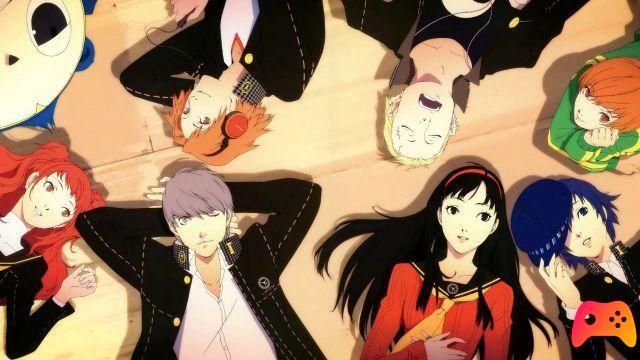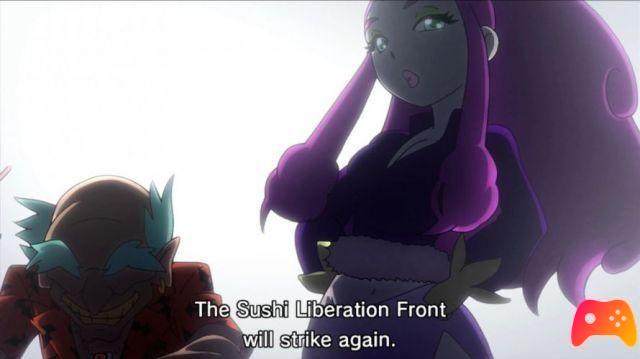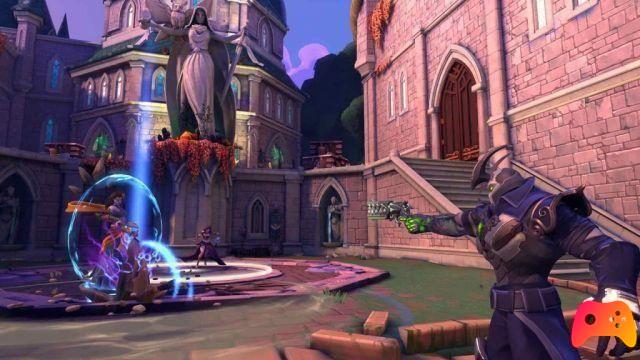Review for Dragon Quest III. Game for Nintendo (NES), Nintendo 3DS and PlayStation 4, the video game was released on 10/02/1988 The version for PlayStation 4 came out on 31/08/2017 The version for 3DS came out on 31/08/2017
Dragon Quest has always been the quintessential JRPG series in Japan, but it has always struggled to become popular in the West, remaining a niche franchise for years. After the era in which Japanese publishers were reluctant to trust our market, Square Enix is committed to spreading its second main saga with us too. The latest Dragon Quest XI: Echoes of a Lost Age, released more than a year ago and applauded by us in our review, marked the great return of the series with one of the best games of the year and this generation. On the occasion of the recent release of the Definitive Edition on Nintendo Switch, Square Enix has made the ports of the very first three chapters of the saga available for the Nintendo console.
These chapters have been replayed overseas several times over the years, but we European players have never had the opportunity to get our hands on them, unless we resort to emulation. In 2014 they were finally released on Android and iOS devices in a version that was based on remakes for SNES and added HD sprites for characters and enemies. This is the version this Switch port is based on.
Dragon Quest III: The Seeds of Salvation is the chapter that closes the so-called Erdrick's trilogy together with the previous two, of which it is actually a prequel since it arises chronologically before Dragon Quest I (among which the manga series The Emblem of Roto takes place). Keep in mind that we are talking about ultra classic games from the 80s, so at the narrative level it is really essential.
The game puts us in the shoes of the young son of Ortega, the legendary hero who died years ago in an attempt to defeat the archdemon Baramos. Having reached his 16 years of age, the young man is summoned by the king who entrusts him with the mission of completing the work of his illustrious father: to eliminate the threat of Baramos. The young man therefore leaves for his adventure in which he can be accompanied by other companions.
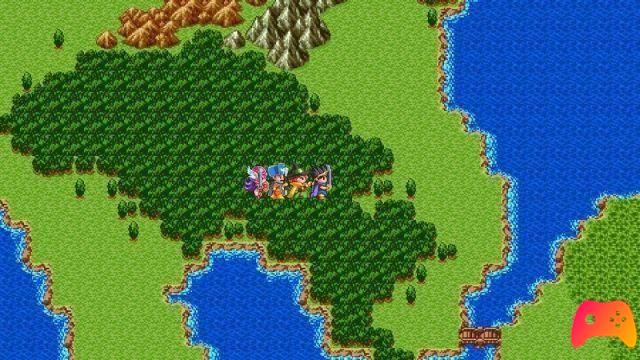
The events totally follow the standard dynamics of a classic RPG, with people to help, dungeons to overcome, keys to find in order to continue etc. Yet in its simplicity Dragon Quest III already takes a good step forward with one more articulated narrative than the absolute flatness of the past, even reserving a small twist.
A not indifferent novelty compared to its predecessors (and indeed rather progressive for the time) is that, before starting the real adventure, the game not only makes the player choose the gender of the protagonist, but subjects him to a personality test which will mark the balance and growth of the parameters.
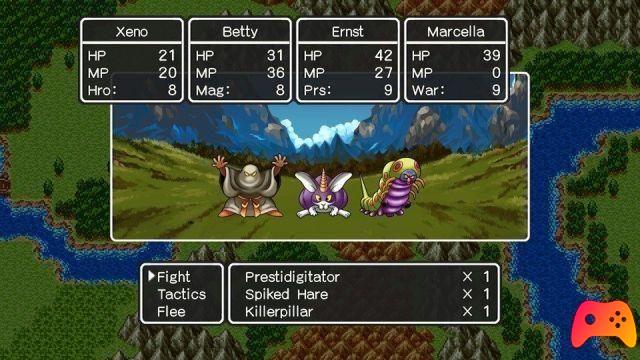
Of the triptych released on Switch, Dragon Quest III is undoubtedly the best not only from a narrative point of view, but also in terms of gameplay, visibly demonstrating the progress of the game mechanics developed over time. In the first Dragon Quest it was possible to control only one character for the whole adventure, only in the second chapter were two other characters introduced. Dragon Quest III not only increases the party capacity to four members, it also introduces a class system. The main protagonist can recruit adventurers to accompany him on his journey, at which, upon reaching level 20 of experience, it will be possible to change classes, keeping some skills already learned.
This class system adds considerable depth to the gameplay compared to the standards of the time. Although it is obviously quite immature when compared to more modern systems, for the time it was a remarkable intuition (remember that Dragon Quest III came out more than two years before Final Fantasy III), and this makes it a true piece of story for classic JRPG lovers.
For the rest, the general game dynamics are almost unchanged, but it should be noted that the game map is larger than its predecessors, and the day-night cycle has been introduced here, which will be a recurring feature of the series.
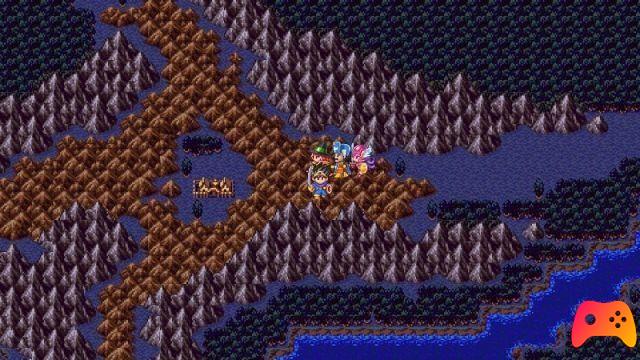
It should be noted that we are talking about a title with a very classic advancement, and by classic we mean above all: few indications and many casual encounters. There will be no cutscenes and dialogues to show you where to go and what to do, but you will be left free to explore the world and its cities, talk to its inhabitants and figure out for yourself what to do to continue the adventure; an advancement that will be marked by an abundant number of random fights, both on the world map and in the dungeons. If you have already played other chapters of the saga you should not receive particular traumas from the personality of Dragon Quest III, apart from perhaps the fact that you can only control the actions of the protagonist, while the remaining characters will be managed by the CPU; but if you're new to old-school JRPG this probably isn't a good first step.
Unfortunately Square Enix did not take advantage of this opportunity to include new features in the package. While the quick-save is absolutely well-liked, a function to increase the speed of the game would also have been useful, and perhaps adjust the frequency of random encounters which could understandably be tedious for some.
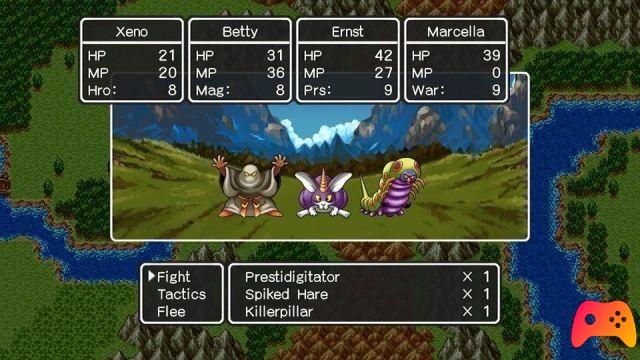
As we mentioned in the introduction, we are faced with a “re-adapted” port with new graphic elements. Graphically we are faced with 16-bit backgrounds on which the various pixel art characters have been replaced by more detailed models; even during the battles the pixel art models of the enemies have been replaced by more defined artwork, but devoid of any animation. This is a change that seeks to rejuvenate the graphics from SNES, but which is not necessarily appreciated. Although visually the game appears cleaner, the contrast between the elements is quite evident and fighting against immobile artwork certainly does not have the same effect.
Although it might be enough to get used to it over time, it is understandable that aficionados of old school games see the operation as an unnecessary forcing. Again, an option to choose the preferred graphic style would have been appreciated.
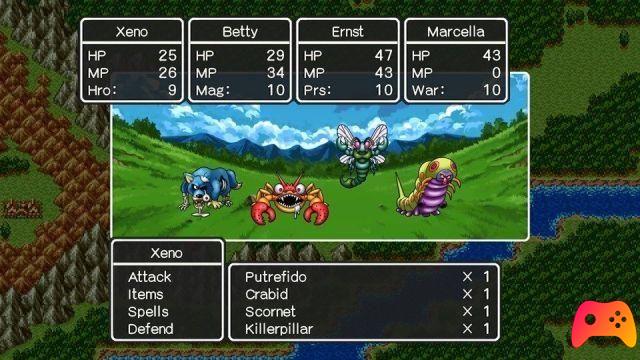
Dragon Quest III: The Seeds of Salvation is definitely the most succulent title of the triptych that landed on Nintendo Switch. Unlike the other two chapters, which cost € 4,99 and € 6,99 respectively, it is also the most expensive one with its € 12,49 which does not seem too small for a title of this kind, also because of the few feature. Also considering the classic mold of the game not really for everyone, we don't feel like recommending it to anyone. This is a small milestone that has contributed to the evolution of the JRPG, and is still fun to play for any enthusiast; While there are arguably better Dragon Quest chapters, its historical value is undeniable. If you are a fan of the saga and are curious to investigate its roots you should not miss it.
► Dragon Quest III is an RPG-Adventure game developed by Spike Chunsoft Tose for Nintendo (NES), Nintendo 3DS and PlayStation 4, the video game was released on 10/02/1988 The version for PlayStation 4 came out on 31/08/2017 The version for 3DS came out on 31/08/2017




